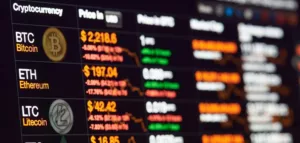Derivative markets have come under fire over the last month as European Banks began considering whether or not to leave UK derivative markets during the transition period in the aftermath of Brexit.
As reported by Financial Times in late September 2018, there are currently trillions of pounds worth of open derivative positions. This impending complication is a cornerstone of controversy as the United Kingdom uncovers what’s next for their country and economy. If European banks decided against supporting the UK derivative market, even if it seems a hasty decision, what would be next for one of the largest derivative markets in the entire world?
According to the Bank for International Settlements, an international financial institution located in Switzerland which is owned and operated by 60 central banks, the currencies with the largest number of open commitments for derivatives in December 2017 and January 2018 came from the USD, EUR, and GBP. Open commitments in the derivative’s market refer to the total number of outstanding derivative contracts that have not been settled. There were 74 million open transactions at the end of 2017 alone, according to the European Securities and Markets Authority.
What would happen to margin trading if banks decided to no longer support the derivatives? Some people might support this, probably those of you that have long considered derivatives as useless inflation tools. However, for those of you that are wondering what the next step should be to ensure that derivative markets continue, the answer to that question is already here.
There is a new class of hybrid, second generation derivative trading facilities that combine cryptocurrency and traditional fiat currency. This type of hybrid trading facility can solve the problem of support after, and if, central banks decide to do away with derivatives as they considered doing in the UK over the past month.
There are several emerging examples of second-generation, hybrid crypto trading platforms such as BitMEX, Monfex, and Bitfinex. However, some of these crypto trading platforms have more issues than others, such as high trading fees and low leverage allowance.
One of the largest concerns for investors is the concept of leverage trading. Most derivative platforms allow leverage ratios around 2:1, 3:1 or 10:1, which means that for every $1 you put in, you can leverage between $2-$10 dollars. It’s almost like a down-payment on a house or a deposit on layaway that you lock down to hold your place and concretize your commitment to buy the derivative at a future time for a future price. As mentioned, while the industry standard is typically below 10:1, breakout startup Monfex announced that they are releasing a crypto trading platform capable of up to 50x leverage for derivatives.
A second looming concern for investors is the high trading commission fees. For example, the trading fees at Bitfinex range from a .200% taker fee plus a 0.100% maker fee for transactions between $0.00 and (USD) $500,000.00, all the way down to a 0.055% taker fee for transactions up to (USD) $30,000,000,000.00. On the other hand, BitMEX’s trading fees range from a 0.075% taker fee and -0.025% maker fee, plus a 0.0500% settlement fee on Bitcoin transactions.
Meanwhile, newcomer Monfex offers a flat, 0.07% trading fee. A flat fee model is more appropriate for all types of crypto investors as opposed to crypto trading platforms that charge the lowest trading fees to the whales that are investing the largest amount of money. More importantly, whether you choose a crypto trading platform that has a flat fee, or one that benefits investors with larger amounts of money, the next generation of crypto trading platforms has arrived.
In closing If central banks decide to do away with derivatives, second generation derivative crypto trading platforms like Monfex will continue delivering the investment opportunity in a more enhanced, all-inclusive way than ever before.








